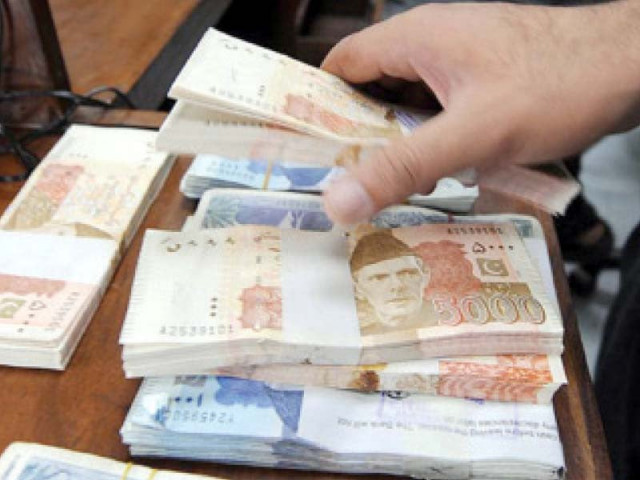31 public entities caused Rs730b loss in FY22
Report reveals NHA tops list of these state-owned firms

Pakistan’s 31 state-owned commercial companies caused colossal losses of Rs730 billion with the National Highway Authority topping the list, revealed a report released by the finance ministry as part of the International Monetary Fund (IMF) condition.
Titled ‘The Federal Footprint, SOE [state-owned enterprises] consolidated report for fiscal year 2021 and 2022’, the report has ended many myths.
All the power distribution companies, including four based in Punjab, suffered losses in the year 2022.
The Pakistan International Airlines (PIA) is not the highest loss-making entity. Surprisingly, the closed Pakistan Steel Mills (PSM) was the 14th highest profit-making company of the government.
The findings of the report, prepared and released on the instructions of the IMF, indicated that the privatisation ministry was not working on the area, where it should have done so urgently – the power sector.
The interim government had excluded the power sector from its priority and just focused on the PIA – the third highest loss-making entity in 2022.
The report reviewed the performance of 133 SOEs from the fiscal year 2020 to 2022.
It covered 88 commercial enterprises and 45 non-commercial entities.
The report showed that out of 88 entities, 50 earned Rs560 billion in profits but the rest of the 31 incurred losses of around Rs730 billion.
The country’s highest loss-making entity was the NHA, which caused a loss of Rs168.5 billion. It was followed by the Peshawar Electric Supply Company (Pesco) that suffered a loss of Rs102 billion.
The PIA was the third biggest loss-making entity, causing a loss of Rs97.5 billion to the national exchequer in 2022.
Despite receiving extraordinary support, the privatisation ministry has been unable to sell the PIA so far.
The 88 commercial SOEs have a total asset base of Rs30.5 trillion and generated a sum of Rs10.4 trillion in the fiscal year 2022.
Read also: PSM board to be dissolved
Out of this Rs10.4 trillion revenue, the share of the oil and gas sector was Rs6 trillion, according to the report.
These 88 SOEs employed 349,573 people.
However, they collectively incurred a net loss of Rs162 billion.
The federal government provided them with financial aid worth Rs179 billion in the fiscal year 2022 to keep them afloat.
This amount is exclusive of any subsidy given for the benefit of the consumers.
The top 10 loss-making entities caused a total depletion of Rs650 billion in 2022.
Out of these 10, three were the NHA, PIA and Pakistan Railways while the rest of the seven were power sector companies.
The power sector is now the biggest drain on the national exchequer.
All the 10 power distribution companies cumulatively caused a loss of Rs376 billion. This sum is more than half of the total losses caused by the public sector companies.
The power generation and transmission companies were in profit. It is the distribution link in the chain that is causing the losses.
Read: Govt rejects absorbing PIA’s Rs263b debt
The power distribution companies of Islamabad, Lahore, Multan, Gujranwala and Faisalabad were profitable at one time.
However, the report revealed that all these companies suffered losses in 2022 -- the last year of the PTI government.
The privatisation ministry is taking no steps to privatise the power sector and instead advised to outsource their managements.
The power sector employs about 140,000 people. The Lahore Electric Supply Company (Lesco) -- once considered efficient -- caused a depletion of Rs30.2 billion in 2022, making it the country’s seventh highest loss-making public-sector firm.
Pakistan Railways caused a deprivation of Rs47.5 billion in 2022 -- the sixth highest loss-making entity but still not on the privatisation list.
The Etisalat-run Pakistan Telecommunication Company Limited (PTCL) also caused a depletion of Rs7.8 billion -- the 14th highest loss-making enterprise and also negating the notion that a state-owned firm managed by the private sector could be turned profitable.
Pakistan’s three federal secretaries sit on the PTCL board and earn hefty fees.
There was only one company that earned more than Rs100 billion -- the Oil and Gas Development Company Limited (OGDCL) that generated a profit of Rs134 billion in 2022.
Among 50, there were only three companies that earned over Rs50 billion in profits -- the Pakistan State Oil (PSO), Pak-Arab Refinery Company (Parco) and Pakistan Petroleum Limited (PPL).
There were in total 13 companies, whose annual income was more than Rs10 billion and 25 SOEs had earned over Rs1 billion per annum in the fiscal year 2022. These firms included the PSM , which earned Rs7.2 billion in 2022.
Also read: PSO receivables surge past Rs800 billion
The PML-N government had shut down the PSM in 2015.
All the three multilateral creditors -- the World Bank, IMF and Asian Development Bank (ADB) -- have been directly involved in the restructuring and privatisation of these entities.
However, all these efforts have remained unproductive yet.
The finance ministry released the report only because of its commitment with the IMF.
The report underlined that the government had initiated a comprehensive reform agenda to enhance SOE governance and performance.
This agenda involves restructuring, privatisation, and introduction of professional management to improve operational efficiency and financial sustainability.
It added that emphasis had also been placed on effective monitoring, structured performance evaluation against defined benchmarks, and prompt corrective action.
The Central Management Unit (CMU) -- set up under the diktat of the IMF and ADB -- will review the performance of these state-run entities.
These SOEs were primarily established to guarantee the provision of essential goods and services to the people in areas, where the private sector investment was hindered because of various factors including significant capital requirements, limited profitability, trade restrictions, market size constraints, and lack of competitive dynamics.
However, over the years, these entities were used as tools by politicians and bureaucrats to extract benefits.



















COMMENTS
Comments are moderated and generally will be posted if they are on-topic and not abusive.
For more information, please see our Comments FAQ